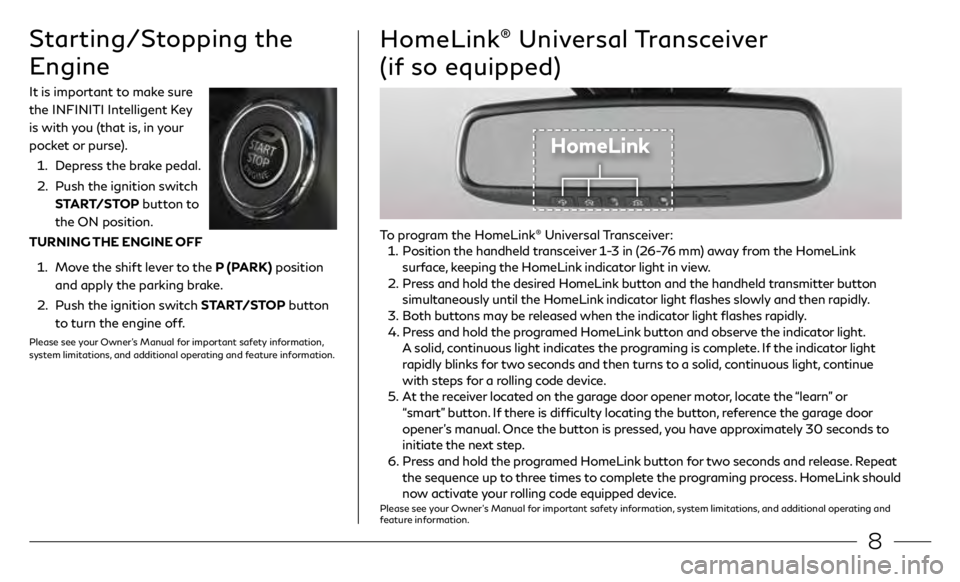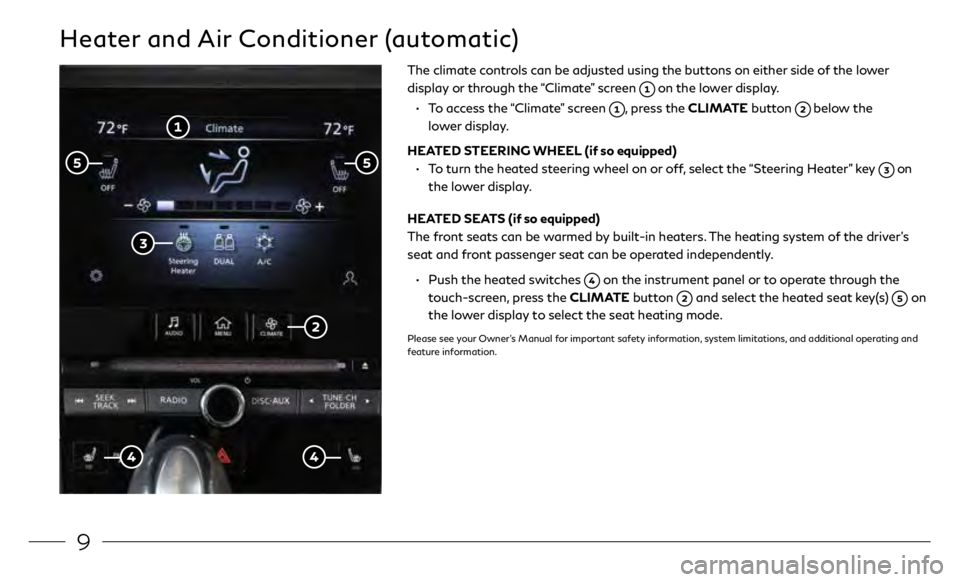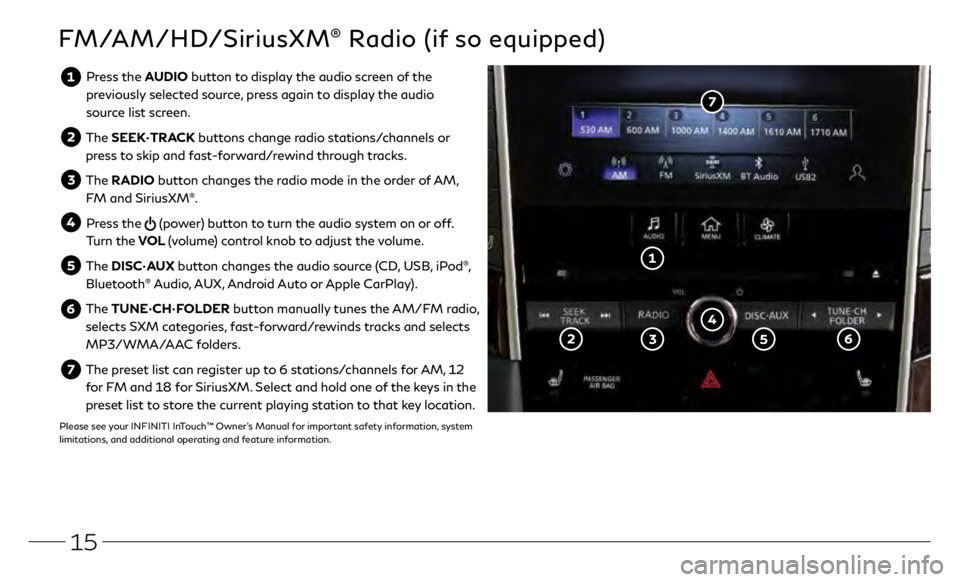buttons INFINITI Q50 2020 Quick Reference Guide
[x] Cancel search | Manufacturer: INFINITI, Model Year: 2020, Model line: Q50, Model: INFINITI Q50 2020Pages: 28, PDF Size: 2.63 MB
Page 11 of 28

8
Starting/Stopping the
EngineHomeLink® Universal Transceiver
(if so equipped)
HomeLink
It is important to make sure
the INFINITI Intelligent Key
is with you (that is, in your
pocket or purse).
1.
Depr
ess the brake pedal.
2.
Push the ignition swit
ch
START/STOP button to
the ON position.
TURNING THE ENGINE OFF
1.
M
ove the shift lever to the P (PARK) position
and apply the parking brake.
2.
Push the ignition swit
ch START/STOP button
to turn the engine off.
Please see your Owner’s Manual for important safety information,
system limitations, and additional operating and feature information.
To program the HomeLink® Universal Transceiver: 1.
P
osition the handheld transceiver 1-3 in (26-76 mm) away from the HomeLink
surface, keeping the HomeLink indicator light in view.
2.
Pr
ess and hold the desired HomeLink button and the handheld transmitter button
simultaneously until the HomeLink indicator light flashes slowly and then rapidly.
3
.
Bo
th buttons may be released when the indicator light flashes rapidly.
4.
Pr
ess and hold the programed HomeLink button and observe the indicator light.
A solid, continuous light indicates the programing is complete. If the indicator light
rapidly blinks for two seconds and then turns to a solid, continuous light, continue
with steps for a rolling code device.
5.
A
t the receiver located on the garage door opener motor, locate the “learn” or
“smart” button. If there is difficulty locating the button, reference the garage door
opener’s manual. Once the button is pressed, you have approximately 30 seconds to
initiate the next step.
6.
Pr
ess and hold the programed HomeLink button for two seconds and release. Repeat
the sequence up to three times to complete the programing process. HomeLink should
now activate your rolling code equipped device.
Please see your Owner’s Manual for important safety information, system limitations, and additional operating and
feature information.
Page 12 of 28

9
Heater and Air Conditioner (automatic)
The climate controls can be adjusted using the buttons on either side of the lower
display or through the “Climate” screen
on the lower display.
•
T
o access the “Climate” screen
, press the CLIMATE button below the
lower display.
HEATED STEERING WHEEL (if so equipped)
•
T
o turn the heated steering wheel on or off, select the “Steering Heater” key
on
the lower display.
HEATED SEATS (if so equipped)
The front seats can be warmed by built-in heaters. The heating system of the driver’s
seat and front passenger seat can be operated independently.
•
Push the heat
ed switches
on the instrument panel or to operate through the
touch-screen, press the CLIMATE button
and select the heated seat key(s) on
the lower display to select the seat heating mode.
Please see your Owner’s Manual for important safety information, system limitations, and additional operating and
feature information.
Page 18 of 28

15
FM/AM/HD/SiriusXM® Radio (if so equipped)
Press the AUDIO button to display the audio screen of the previously selected source, press again to display the audio
source list screen.
The SEEK•TRACK buttons change radio stations/channels or
press to skip and fast-forward/rewind through tracks.
The RADIO button changes the radio mode in the order of AM,
FM and SiriusXM®.
Press the (power) button to turn the audio system on or off.
Turn the VOL (volume) control knob to adjust the volume.
The DISC•AUX button changes the audio source (CD, USB, iPod®,
Bluetooth® Audio, AUX, Android Auto or Apple CarPlay).
The TUNE•CH•FOLDER button manually tunes the AM/FM radio,
selects SXM categories, fast-forward/rewinds tracks and selects
MP3/WMA/AAC folders.
The preset list can register up to 6 stations/channels for AM, 12 for FM and 18 for SiriusXM. Select and hold one of the keys in the
preset list to store the current playing station to that key location.
Please see your INFINITI InTouch™ Owner’s Manual for important safety information, system
limitations, and additional operating and feature information.